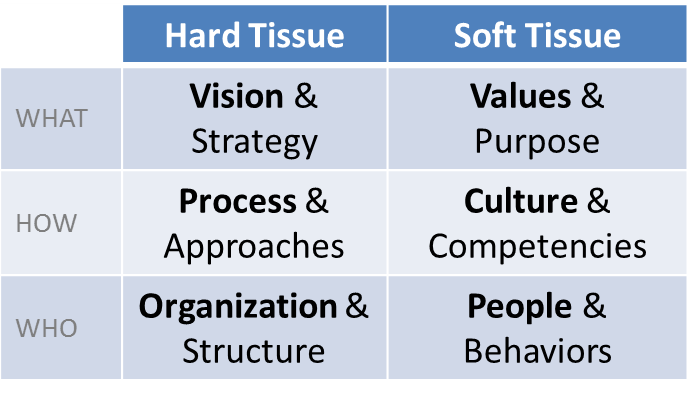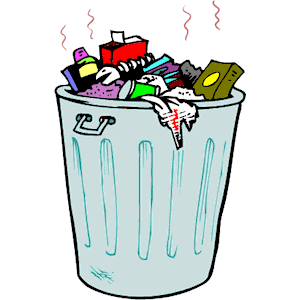If you frequently read about management- & strategy- fundamentals, you’re probably very familiar with certain common terminology – vision, mission, goals, strategy, objectives, processes…
On the other hand, if you’re into human dynamics & development, you’re probably more in tune with another set of terminology – values, culture, behaviors, competencies, skills, people…
While most would agree these two “families” are certainly not in opposition, I find that many become somewhat hamstrung when trying to relate them. Should they even be related?… are they apples and oranges (completely different)?….or maybe just apples of different color or flavor (somewhat the same, but expressed differently)?
I think the answer is “neither!”… and propose to use a different metaphor – the hard- and soft- tissue of the body.
The hard tissue is all the structural “stuff” (skeleton) we typically think of in the “strategy family,” while the soft tissue (nerves & organs) is all the “stuff ” we would typically put in the “human dynamics” family.
So, beyond the metaphor, how do these two “tissues” of an organization’s body line up? Let me propose a very simple framework:
Clearly, just as in our bodies, it’s not a question of either or, it must be BOTH AND. Neither can exist in isolation or in parallel worlds, their interconnection has to be understood and intentionally managed in order to ensure optimum health and high-performance.
As a teaser, my next post will deal with exactly the above point and answer the question: “so what”? I’ll explore some tangible interconnections, similarities and differences that will hopefully make it come to life in an impactful way.
In the meantime I’d love to hear from you…Does the metaphor make sense to you?…does it provide a useful lens to reconcile concepts and see the alignment between them?…have you already thought of “vital” interconnections applications?






